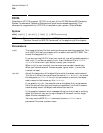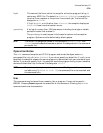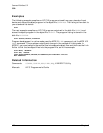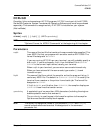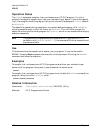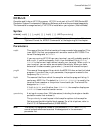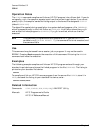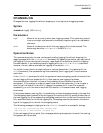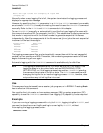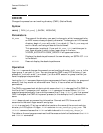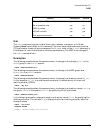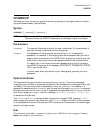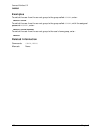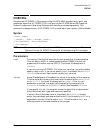
132 Chapter 3
Command Definitions C-E
CHANGELOG
Mount new tape volume for changelog of logid AAA
(ulogmsg 40).
Normally when a user logging file is full, the system terminates the logging process and
displays an appropriate message.
However, by specifying the AUTO parameter in a GETLOG or ALTLOG command, you enable
an automatic CHANGELOG, thereby eliminating the need to issue the CHANGELOG command
manually. Refer to the ALTLOG and GETLOG commands in this chapter.
To use CHANGELOG (manually or automatically), end the first user logging file name with
the numeric characters 001 (for example, fname001). This establishes a naming convention
that works in conjunction with the file set number to generate sequential file names
independently. New file names consist of the file name root (fname) plus the next sequential
increment of the last three digits:
Current File Next File
TEST001 TEST002
TEST002 TEST003
... ...
TEST998 TEST999
TEST999 TEST000
The logging process opens files, and automatically names them with the next sequential
number, up to a maximum of 999. Thereafter, the numbering sequence resets to 000 and
begins incrementing all over again.
Automatic logging with the CHANGELOG command is available only for disk files.
NOTE The logging process specified by logid must be in an ACTIVE state. If the
logging process is in any other state, such as RECOVERING, STOP,
INITIALIZING, or if the logging process has another CHANGELOG pending,
the command terminates in an error state. The ALTLOG command permits
changing the log file for an inactive logging process. ALTLOG, however, does
not provide a way to link log files into a set.
Use
This command may be issued from a session, job, program, or in BREAK. Pressing Break
has no effect on this command.
You must be the logid creator or have system manager (SM) or system supervisor (OP)
capability to use the CHANGELOG command. User logging (LG) capability is also required.
Example
If you are running a logging process with a logid of KATHY, logging to logfile KLOG001, and
you want to close the current logfile and log to a new logfile, KLOG002, without
interrupting the logging process, enter:
CHANGELOG KATHY



